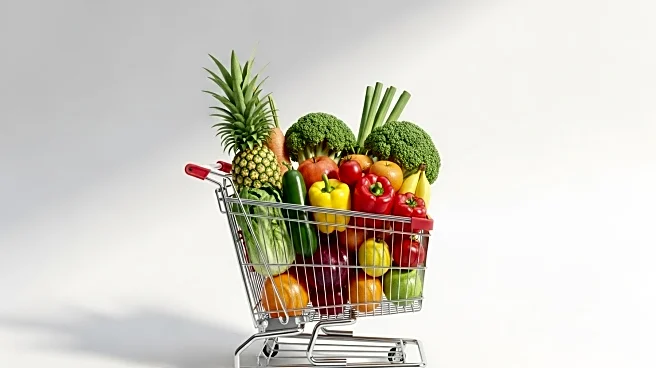What's Happening?
Amidst rising grocery prices due to inflation, tariffs, and extreme weather, Consumer Reports has provided strategies to help Americans manage their food budgets. According to the USDA's Economic Research Service, food prices have increased by 24% from 2020 to 2024, with coffee prices alone surging by 45% year-over-year in August. Consumer Reports suggests shopping with a plan, opting for generic or store-brand products, and considering meatless meals to save costs. Additionally, proper storage of groceries and joining store loyalty programs can further reduce expenses. For those in need, resources like food banks and SNAP benefits are available.
Why It's Important?
The rising cost of groceries is a significant concern for many American households, impacting their financial stability and access to essential goods. The strategies provided by Consumer Reports offer practical solutions to mitigate these costs, potentially easing the financial burden on families. This guidance is crucial as it empowers consumers to make informed decisions, promoting financial literacy and resilience. Moreover, the emphasis on community resources highlights the importance of social support systems in addressing food insecurity, which remains a critical issue in the U.S.
What's Next?
As grocery prices continue to rise, consumers may increasingly adopt these strategies to manage their budgets effectively. Retailers might respond by offering more competitive pricing on store-brand products and enhancing loyalty programs to attract cost-conscious shoppers. Additionally, there could be increased advocacy for policy measures to address the underlying causes of food price inflation, such as tariffs and climate-related disruptions. The focus on sustainable and cost-effective shopping practices may also drive innovation in the food industry, encouraging the development of affordable and environmentally friendly products.
Beyond the Headlines
The rising grocery costs reflect broader economic challenges, including inflation and supply chain disruptions. This situation underscores the need for systemic solutions to ensure food affordability and security. The emphasis on community resources and government assistance programs highlights the role of social safety nets in supporting vulnerable populations. Furthermore, the shift towards meatless meals and generic products may influence consumer preferences and drive changes in food production and marketing strategies.












